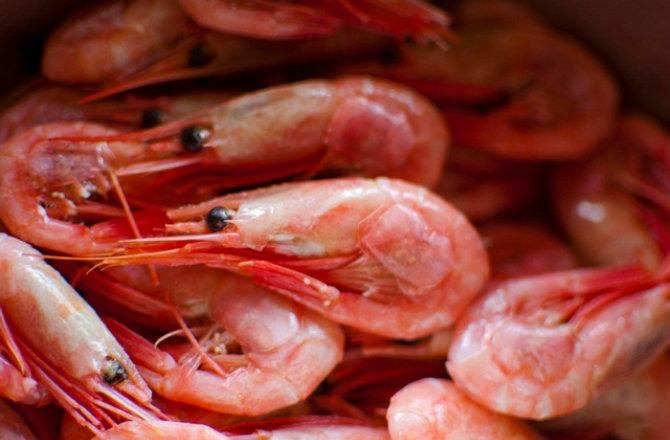Sustainable Fish Guide: The Best And Worst Fish
Choosing your fish responsibly is really a two-part process. First, you have to consider the environment: Is the species overfished? Or if it is farm-raised, is that done in an eco-friendly way? Then, you have to figure out the health risks: Is the fish safe to eat? Does it have a high rate of contaminants? And to make things more difficult, these two categories don't always overlap. Sometimes an eco-friendly fish is one of the most dangerous for you to eat; and vice versa. (Plus, you also need to figure out what all of these terms actually mean.)
The abundance of information available on the web is almost counterproductive because it makes the process incredibly complicated; there are too many decisions to make and factors to consider when you just want to pick a fish for dinner. So we created the Sustainable Fish Guide, which will tell you everything you need to know about shopping responsibly and how to do it.
Since we couldn't find a guide that listed the best fish for you and the environment, we made one ourselves (see below). We also made a list of the 10 worst fish to eat.
[slideshow:
The Best Eco-friendly and Healthy Fish To Eat*
It can be difficult to choose a fish because some of the fish that are the best for you to eat health-wise may be the worst eco-wise. Our suggestion? We cross-referenced a health-alerts list and an eco-rated fish list, from the EDF (Environmental Defense Fund) to make our best and worst lists. Also note that the EDF has added a new feature this year that indicates which fish have the most heart-healthy omega-3 fatty acids.
- Pacific halibut (caught in Alaska or Canada)
- Farmed oysters
- Sablefish/black cod (from Alaska or Canada)
- Albacore tuna (US and Canada)
- Wild Alaskan salmon and canned salmon
- Farmed rainbow trout
- Clams, farmed and soft-shell
- Long-fin squid (US)
- Farmed bay scallops
- Pink shrimp (from Oregon)
- Mahimahi (US-caught by troll or pole)
- Farmed mussels
*As these lists are bound to change, we suggest you also cross-reference the two charts so that you can be updated about your shopping choices. Just use the find and replace key to search for your desired fish.
Read on to see a quick guide to the terms and definitions that we use in this story...
Basic Terms and Definitions
1) What does sustainable fishing mean?
The way that we fish and farm fish matters because methods vary in their negative impact on the environment. The goal of sustainable fishing is to reduce these negative impacts as much as possible, and to protect the Earth's natural resources and ecosystems.
2) Wild Seafood Fishing Methods*
Two of the biggest problems with fishing methods are bycatch (catching and/or killing unintended fish — the equivalent of an innocent bystander) and damage to the ocean floor (caused by dredging or dragging nets along it). Click here to read more about fishing methods.
3) Fish Farming/Aquaculture Methods
Some of the concerns for different methods of fish farming are untreated wastewater entering natural waterways and spreading diseases to the natural wildlife, destruction of coastlines and pollution of groundwater from untreated waste water, and farmed fish escaping and competing and/or breeding with wild species. There are some systems that address these concerns, but they are expensive to operate at this time. Click here to read more about the specific systems.
*When you look at seafood watches online for fish that are safe to eat and good for the environment, you will usually see the fish with these definers following them: wild, trawl, imported long-line, etc.; these refer to the fishing or farming methods used for the fish.
4) Mercury
One of the major health concerns when eating fish is the level of mercury in wild fish, a result of industrial pollution. Generally, large fish at the top of the food chain, like sharks, swordfish or king mackerel, have the highest levels of mercury because they accumulate more as they eat the mercury-filled smaller fish. High levels of mercury in the body are especially dangerous for pregnant women or young children because it can cause severe damage to developing nervous systems. So it is important to check out seafood watches and health indexes to stay up-to-date on what fish are safe to eat.
5) PCB
A man-made industrial pollutant that is toxic for adults and particularly children. It doesn't break down easily in water, so it accumulates in fish tissues and then, consequently, in our bodies when we eat contaminated fish.
6) More Information
When purchasing fish, look for products that are sustainably and responsibly raised like the gorgeous New Zealand King Salmon photographed above, which has no preservatives or nitrates added — the brand also offers a smoked version that only has three ingredients: king salmon, sea salt, and manuka wood smoke. If you're unsure of where the fish at your local market falls on this list, check out The Monterey Bay Aquarium's Seafood Watch program, which has downloadable pocket guides for each part of the country and an iPhone application. On their site, you're also able to search for any fish and learn of the health risks.
Click here to see a Chef's Secrets for Cooking Fish.
Click here to see the 10 Worst Fish to Eat Slideshow.
Check out our video of Chef Eric Ripert on sustainable seafood below:

